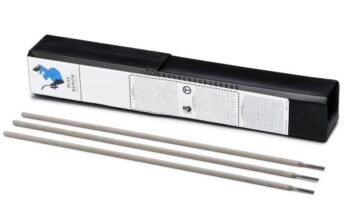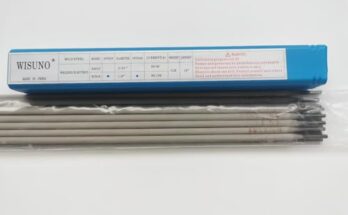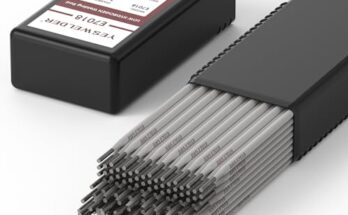When I first started welding, I was like a lot of beginners—curious, excited, and maybe a little nervous. Most people told me to stay away from aluminum, especially if I was using a stick welder. They said it was tricky and that I’d need expensive machines or fancy techniques.
After some trial, error, and a good bit of research and practice, I realized that welding aluminum with a stick welder is possible. Not easy, but definitely doable with the right approach.

Photos by yeswelder
I want to walk you through what I’ve learned. If you’re a hobbyist, a DIY enthusiast, or just someone who’s fascinated by the idea of joining metals together, this article is for you.
I’ll break everything down in a simple, human way—just like I’d explain it if we were sitting together in my garage, sipping coffee and talking shop.
Why Welding Aluminum Is Different from Welding Steel
Aluminum is a whole different beast compared to steel. It’s lightweight and corrosion-resistant, which makes it perfect for many projects—from trailers and boats to grills and bike frames. But it also brings some unique challenges.
First off, aluminum conducts heat way faster than steel. That means it heats up quickly and cools down fast too. This can make it hard to keep a stable arc and can lead to burn-throughs if you’re not careful.
It also forms an oxide layer on its surface, which melts at a much higher temperature than the aluminum underneath. That layer has to be dealt with, or it’ll cause trouble when you try to weld.
And lastly, aluminum doesn’t give you the visual clues that steel does. You can’t always see when it’s about to melt or sag. So you need to stay alert and keep your hands steady.
Can You Really Use a Stick Welder for Aluminum?
Yes, you can. Stick welding, also known as Shielded Metal Arc Welding (SMAW), is usually more common for steel and iron. With the right electrode and technique, it works for aluminum too.
I’ve done it myself, and while it’s not the most polished or precise method, it’s effective—especially for repairs or quick jobs when you don’t have a TIG or MIG welder nearby.
The key is using the right consumables and understanding how to adapt your technique.
Choosing the Right Electrode for Welding Aluminum
The electrode is everything in stick welding aluminum. You need a specific type of rod that’s made for this job. The most common one is E4045 or E4043 aluminum stick electrode.
These rods have a special flux coating that helps clean the surface while you weld and provides the shielding you need to protect the molten metal.
Here’s a quick look at some basic info:
| Electrode Type | Recommended for | Features |
|---|---|---|
| E4043 | General use | Smooth finish, good for casting |
| E4045 | Stronger welds | More ductility, good for repair jobs |
E4043 is the one I’ve used the most. It’s fairly forgiving and gives you a decent-looking weld if you’re patient.
Preparing Aluminum for Stick Welding
This step is critical. You can’t skip it, no matter how confident you feel. Aluminum needs to be super clean before you weld it. Here’s what I always do:
- Remove the oxide layer: I use a stainless steel wire brush (one that I ONLY use for aluminum) to scrub the surface.
- Degrease the metal: A wipe-down with acetone or a similar degreasing agent helps get rid of oil, dirt, or fingerprints.
- Dry the metal thoroughly: Moisture is your enemy here. It can cause porosity and make your weld brittle.
Some people also preheat the aluminum with a torch to around 200°F. This helps reduce cracking and makes it easier to get a good bead, especially on thicker pieces.
What Settings Should You Use on Your Stick Welder?
If your machine is AC/DC, I recommend using DC reverse polarity (DCEP). It helps get better penetration and arc stability. But if your welder only runs AC, that can work too—it just might be a little harder to control.
Set the amperage based on your electrode size and material thickness. Here’s a rough guide:
| Electrode Diameter | Material Thickness | Recommended Amperage |
|---|---|---|
| 3/32 inch | 1/8 to 1/4 inch | 60-90 amps |
| 1/8 inch | 1/4 inch or more | 90-130 amps |
Remember, these are just starting points. You’ll want to do a few test passes and tweak your settings as needed. Stick welding is all about feel, so listen to the arc and watch how the puddle behaves.
Welding Techniques That Work for Aluminum
Now for the fun part—actually welding. Here are the techniques that worked best for me:
Short Arc Length: Keep the arc close, just enough to maintain stability. Too long, and you’ll get spatter or an unstable arc.
Weave Slightly: I use a small circular or side-to-side weave to spread the heat a bit and get a smoother bead.
Travel Fast: Don’t linger. Aluminum doesn’t need you to hang around in one spot too long. Keep a steady, moderate pace.
Watch the Puddle: This takes time to get used to. Aluminum puddles aren’t as visible as steel. It takes a few runs to know what to look for.
Stick welding aluminum can be messy at times, and the slag is different from steel. It’s thick and crusty, and you’ll need a chipping hammer to remove it. Always clean between passes if you’re doing multi-layer welds.
Common Problems and How to Fix Them
Here are a few snags I ran into early on—and how I worked through them.
Porosity: This shows up as tiny holes in the weld. Usually caused by moisture or contamination. Make sure your metal is dry and clean.
Cracking: Aluminum can crack if it cools too fast. Preheating helps, as does avoiding sharp stops in your weld.
Poor Arc Start: Aluminum rods can be hard to start. Strike the arc gently like a match and keep the rod dry before use.
Spatter Everywhere: If your arc is too long or amperage too high, you’ll get a messy weld. Dial it back a bit and tighten your arc.
When Is Stick Welding Aluminum the Right Choice?
It’s not for every job, that’s for sure. But here are times when it shines:
Quick Repairs: If you’ve got a cracked lawn chair, boat hull, or trailer fender, it’s a fast fix.
Outdoors: Stick welding is less affected by wind compared to MIG or TIG. So it works better for field jobs.
Budget-Friendly Projects: If you don’t have the cash for high-end gear, stick welding with aluminum rods is a good workaround.
Just know that it’s probably not the best choice for delicate, precision welding like custom fabrication or show-quality parts. For those, TIG is usually the way to go.
Safety Tips You Should Always Follow
Welding aluminum with a stick welder is no joke. Here are some safety habits I follow every single time:
- Wear the right gear: Welding gloves, long sleeves, helmet with the right shade (usually shade 10+), and safety boots.
- Ventilation is key: Aluminum flux can release some pretty nasty fumes. Make sure you’re in a well-ventilated area or use a fume extractor.
- Don’t touch hot metal: Sounds obvious, but aluminum doesn’t always look hot. Use pliers or let it cool completely before handling.
- Store rods properly: Aluminum rods attract moisture fast. Keep them sealed and dry.
My Honest Thoughts on Learning to Stick Weld Aluminum
It’s challenging, no doubt. But it’s also really satisfying once you figure it out. Don’t get discouraged if your first few welds look rough. Mine did too. With practice, you’ll start to read the arc better, adjust your hand speed, and recognize when your settings need tweaking.
I always say—start small. Grab some scrap aluminum, set up a simple practice rig, and just start welding. Watch how the puddle reacts, how the slag forms, and how the metal cools. Every weld teaches you something new.
And remember, even seasoned welders mess up now and then. The key is to keep learning and improving with every pass.
Conclusion
Welding aluminum with a stick welder might not be the easiest method out there, but it’s certainly a valuable skill to have—especially if you enjoy the hands-on satisfaction of doing repairs or small projects at home. Once you get comfortable with the right rods, techniques, and preparation, you’ll be surprised how effective it can be.
If you’re someone who likes to get their hands dirty, solve problems, and learn by doing, then this welding technique is worth exploring. Just be patient with yourself, stay safe, and don’t be afraid to make mistakes. That’s how we grow.
Thanks for sticking around with me through this guide—I hope it lights a spark in you (pun intended) to try welding aluminum with a stick welder. If I could figure it out, you absolutely can too.
FAQs
Can you weld aluminum with a regular stick welder?
Yes, you can. You just need aluminum-compatible electrodes like E4043 and the right technique.
Do I need to preheat aluminum before stick welding?
Preheating isn’t always required, but it helps reduce cracking—especially for thicker pieces.
What is the best rod for stick welding aluminum?
E4043 is a popular and forgiving choice for general aluminum welding.
Why does aluminum weld crack after cooling?
It usually cracks because of rapid cooling or contamination. Try preheating and make sure your surface is clean.
Is aluminum stick welding good for beginners?
It’s not the easiest method to start with, but if you already have some stick welding experience, it’s definitely worth a shot.
Do I need DC or AC for aluminum stick welding?
DC reverse polarity (DCEP) is best, but AC can work with the right rod and technique.
Can I use a steel brush to clean aluminum?
No, always use a stainless steel brush specifically reserved for aluminum to avoid contamination.







